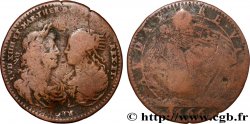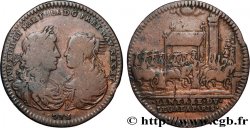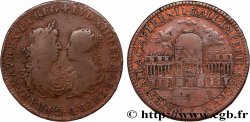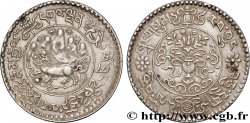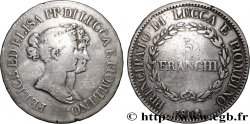E-auction 83-42346 - fjt_225613 - MARIE-THÉRÈSE D'AUTRICHE Arrivée de la reine à Paris 1660
You must signin and be an approved bidder to bid, LOGIN TO BID. Accounts are subject to approval and the approval process takes place within 48 hours. Do not wait until the day a sale closes to register. Clicking on « bid » constitutes acceptance of the terms of use of cgb.fr private e-auctions.
Bids must be placed in whole Euro amounts only. The sale will start closing at the time stated on the item description; any bids received at the site after the closing time will not be executed. Transmission times may vary and bids could be rejected if you wait until the last second. For further information ckeck the E-auctions F.A.Q.
NO BUYER'S FEE.
NO BUYER'S FEE.
| Estimate : | 35 € |
| Price : | 16 € |
| Maximum bid : | 42 € |
| End of the sale : | 17 November 2014 18:58:30 |
| bidders : | 7 bidders |
Type : Arrivée de la reine à Paris
Date: 1660
Metal : brass
Diameter : 27 mm
Orientation dies : 6 h.
Edge : lisse
Rarity : R1
Catalogue references :
Obverse
Obverse legend : .LVD. XIIII. D. G. FR. ET. NAV. REX.
Obverse description : Buste drapé et cuirassé à droite.
Reverse
Reverse legend : AVGVSTÆ. PACIFERÆ. LVTETIAM. FELIX. INGRESSVS À L'EXERGUE: 26 AVG.1660.
Reverse description : La reine dans son char précédée de héraults d'armes, entrant dans Paris. En dessous, la date 26. AVG 1660.
Reverse translation : L'heureuse entrée à Paris de l’auguste porteuse de Paix.
Commentary
Buste intéressant. Ce jeton célèbre l’arrivée de la reine à Paris, après son mariage avec le roi à la frontière espagnole. Ce mariage était prévu par le Traité des Pyrénées datant de 1659, ce qui explique la légende du revers.
Interesting bust. This token celebrates the arrival of the queen in Paris, after her marriage to the king on the Spanish border. This marriage was provided for by the Treaty of the Pyrenees dating from 1659, which explains the legend on the reverse.
Interesting bust. This token celebrates the arrival of the queen in Paris, after her marriage to the king on the Spanish border. This marriage was provided for by the Treaty of the Pyrenees dating from 1659, which explains the legend on the reverse.








 Report a mistake
Report a mistake Print the page
Print the page Share my selection
Share my selection Ask a question
Ask a question Consign / sell
Consign / sell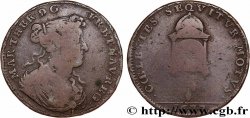
 Full data
Full data